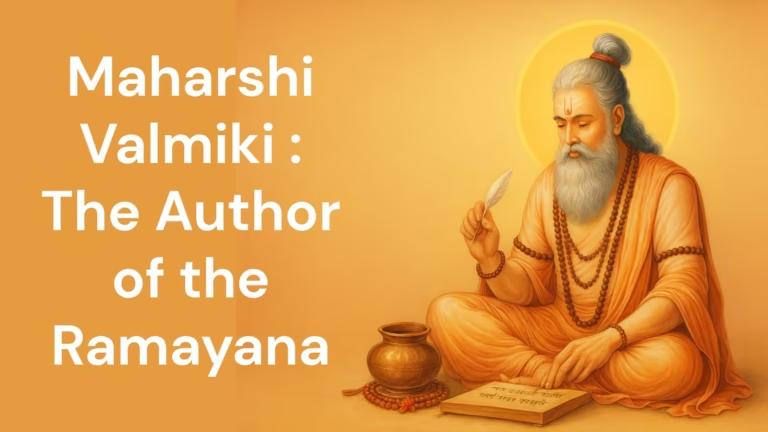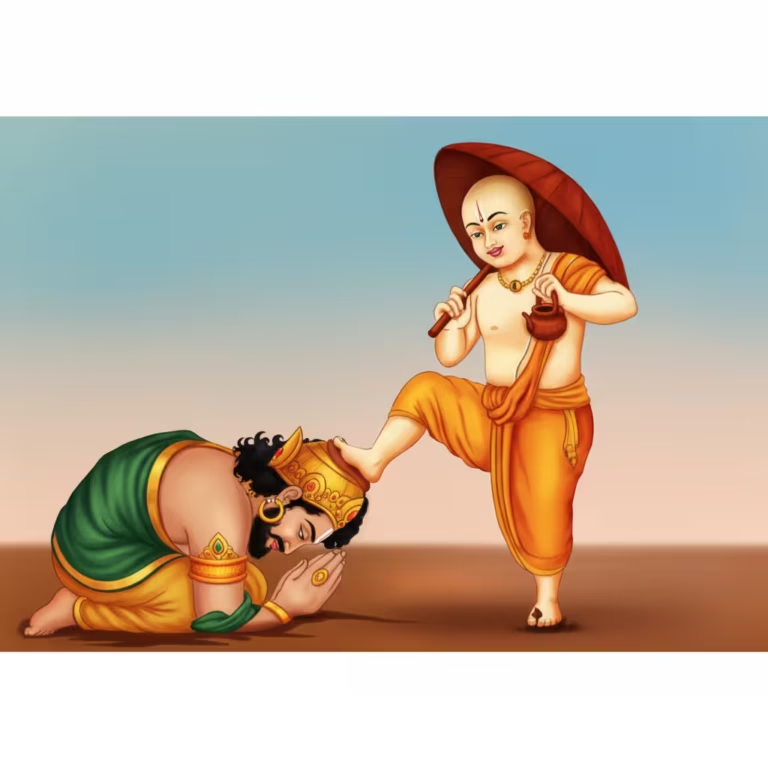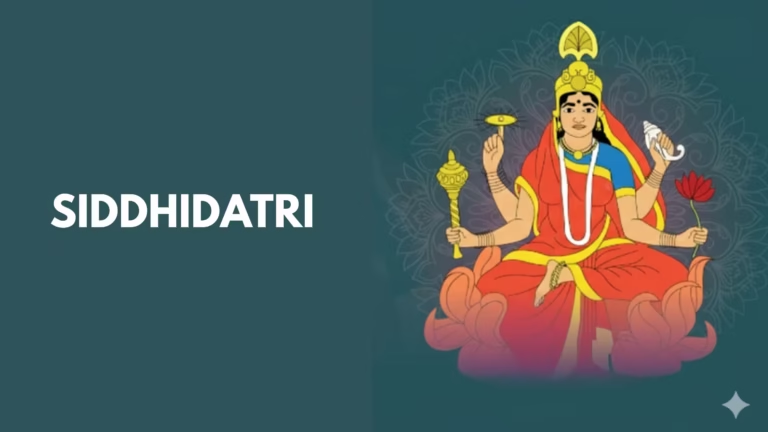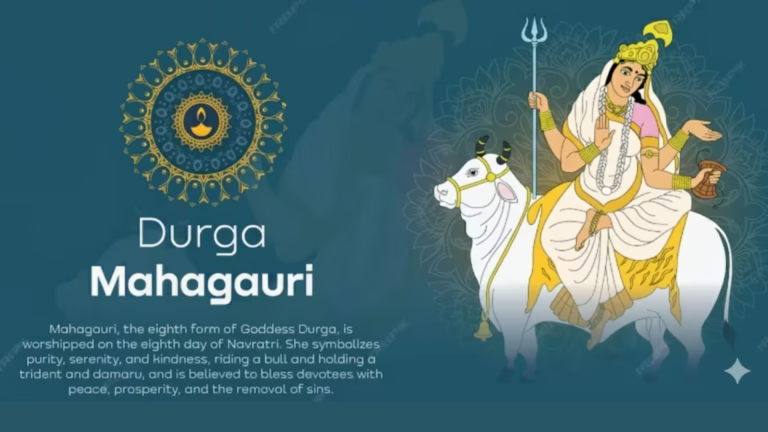Table of Contents
Introduction
Lord Ganesha, also known as Ganapati, Vinayaka, and Pillaiyar, is one of the most revered and beloved deities in Hinduism. He is instantly recognizable by his elephant head, a symbol of wisdom and power, and his round, pot-bellied human form. Worshipped by millions across the world, Lord Ganesha is regarded as the remover of obstacles (Vighnaharta), the deity of intellect, learning, and new beginnings. He is venerated at the start of every sacred ritual, business venture, or significant event to ensure success and eliminate hurdles.
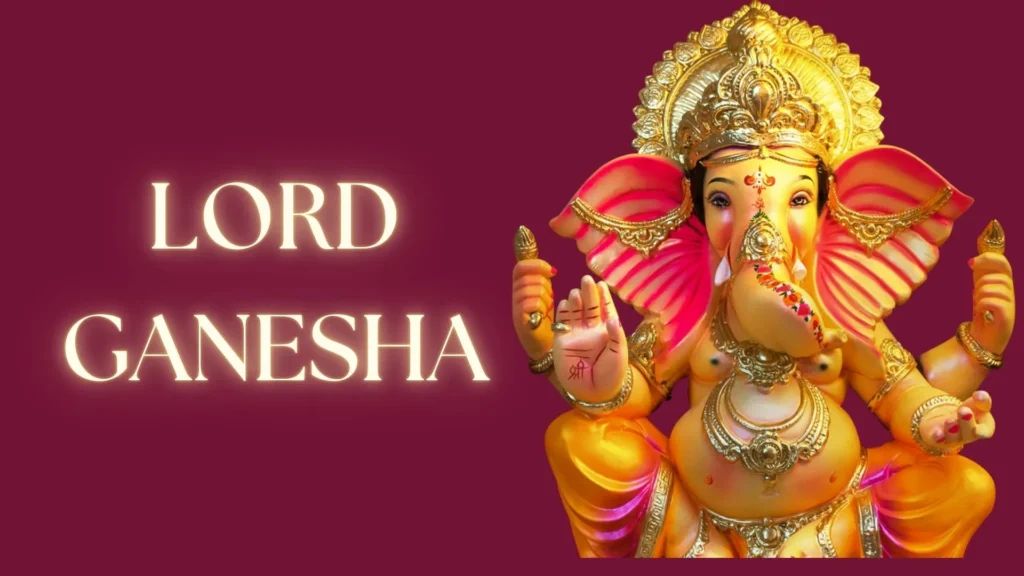
Ganesha’s relevance is not limited to religious texts alone. He is deeply embedded in the cultural, artistic, and philosophical fabric of India. From classical literature to contemporary art, from ancient rituals to modern celebrations, Lord Ganesha’s presence is pervasive and timeless. This extended and detailed article presents a holistic exploration of Lord Ganesha’s origins, forms, symbolism, stories, festivals, powerful mantras, temples, worship rituals, and deeper spiritual teachings.
Origin and Mythological Background
Birth of Lord Ganesha
According to the most popular version from the Shiva Purana, Goddess Parvati created Ganesha from turmeric paste used during her bathing rituals. She desired a son to guard her privacy while she bathed, so she shaped a boy from the paste and infused it with life. Ganesha obeyed his mother’s command and stood guard outside her chamber.
Meanwhile, Lord Shiva, Parvati’s consort, returned and was stopped at the door by the young Ganesha. Not recognizing him and angered by his refusal, Shiva engaged in a battle with the boy. In his fury, Shiva beheaded Ganesha with his trident. When Parvati discovered this, she was grief-stricken and furious. To console her and rectify the situation, Shiva ordered his attendants (ganas) to bring the head of the first living creature they came across — an elephant. The elephant head was placed on Ganesha’s body, and he was resurrected. Shiva then declared him as the leader of his troops (Ganapati) and granted him the status of being worshipped before all other gods.
Alternate Versions of His Birth
In the Skanda Purana, another version states that Ganesha was created from Shiva’s laughter. The Padma Purana mentions that Ganesha was created from a combination of the energies of both Shiva and Parvati. The Brahma Vaivarta Purana goes further to describe Ganesha as being born with an elephant head.
These varying versions underline Ganesha’s divine origin and emphasize different spiritual truths — creation from devotion, laughter, and divine will.
Symbolic Significance of Lord Ganesha
Every aspect of Lord Ganesha’s form is rich in symbolism and spiritual meaning:
- Elephant Head: Represents wisdom, memory, and the capacity to understand complex truths. It also symbolizes strength and leadership.
- Large Ears: Encourage active listening and the absorption of knowledge. It teaches that a wise person listens more and speaks less.
- Small Eyes: Denote concentration, attention to detail, and foresight.
- Curved Trunk: Symbolizes adaptability and efficiency. The trunk’s ability to pick up both small and large objects reflects a mind that can handle both minute details and grand tasks.
- Large Belly: Signifies generosity, the ability to accept all of life’s experiences, and the capacity to hold cosmic knowledge.
- One Tusk: Represents the idea of overcoming duality. The broken tusk symbolizes sacrifice and the pursuit of higher truths.
- Mouse (Mushika) as Vehicle: Reflects humility, as the divine chooses a tiny creature as its ride. It also symbolizes the control over desires and the ego.
- Axe, Rope, and Modak in Hands: The axe cuts off attachments, the rope pulls devotees closer to the path of righteousness, and the modak (sweet) represents the bliss of self-realization.
Ganesha’s image, though seemingly simple, embodies profound yogic and Vedantic truths.
Popular Stories and Legends
The Race Around the Universe
Sage Narada once gave a divine fruit of knowledge to Lord Shiva and Parvati, advising that it should be given to only one of their sons. To settle the matter, Shiva proposed a challenge — whoever could circle the world three times first would get the fruit. Kartikeya, riding his peacock, swiftly began his journey. Ganesha, riding a small mouse, knew he could not match Kartikeya in speed. So instead, he respectfully circled his parents three times, declaring that they were his entire universe. His wisdom and devotion won him the fruit.
This story highlights the power of intelligence over physical prowess and teaches the value of understanding priorities in life.
The Broken Tusk and Mahabharata
When Sage Vyasa decided to compose the epic Mahabharata, he requested Lord Ganesha to be his scribe. Ganesha agreed, but on the condition that Vyasa would not pause while dictating. Vyasa countered with the stipulation that Ganesha must understand every verse before writing. During the composition, Ganesha’s writing instrument broke. Rather than stop, he broke off one of his tusks and used it to continue writing. This story symbolizes dedication, sacrifice, and the importance of knowledge.
The Moon’s Curse
During one of his birthday celebrations, Ganesha ate an enormous amount of sweets. Riding on his mouse, his belly burst open, and he quickly tied it back with a snake. The moon saw this incident and laughed mockingly. Enraged, Ganesha cursed the moon, causing it to vanish. Eventually, the moon apologized, and Ganesha modified the curse, allowing it to wax and wane.
This legend teaches about the consequences of pride and the power of forgiveness.
Associated Festivals
Ganesh Chaturthi
Ganesh Chaturthi, celebrated in the Hindu month of Bhadrapada (August–September), is the grandest festival dedicated to Lord Ganesha. It spans 10 days, starting on the fourth day (Chaturthi) of the waxing moon. In homes and public spaces, intricately crafted Ganesha idols are installed, worshipped with rituals, music, and cultural programs. Sweets like modaks, laddus, and karanjis are offered to the deity.
In Maharashtra, Karnataka, Goa, Telangana, and parts of Gujarat, the festival is celebrated with unmatched enthusiasm. On the final day, known as Anant Chaturdashi, idols are immersed in water bodies during the Visarjan procession, symbolizing the return of Ganesha to Mount Kailash.
Ganesh Chaturthi promotes values of community, unity, art, devotion, and environmental awareness.
Monthly Sankashti Chaturthi
Sankashti Chaturthi is observed every month on the fourth day of the waning lunar phase. Devotees fast from sunrise to moonrise and break their fast after sighting the moon and offering prayers to Ganesha. It is believed that observing this fast with devotion can remove hardships and grant prosperity.
Special Sankashti Chaturthi days like Angaraki (when it falls on a Tuesday) are considered highly auspicious.
Powerful Mantras and Chants
Chanting Ganesha mantras regularly enhances mental clarity, spiritual strength, and success in endeavors. Here are some revered mantras:
- Vakratunda Mahakaya Mantra Vakratunda Mahakaya Suryakoti Samaprabha Nirvighnam Kurume Deva Sarva Karyeshu Sarvada
This mantra invokes Ganesha’s protection and is commonly chanted at the beginning of rituals.
- Ganesh Gayatri Mantra Om Ekadantaya Vidmahe Vakratundaya Dhimahi Tanno Danti Prachodayat
A sacred Gayatri mantra invoking Lord Ganesha to bless the devotee with wisdom and spiritual illumination.
- Om Gan Ganapataye Namah A bija mantra that resonates with Ganesha’s energy. It is simple yet profoundly powerful and can be repeated during meditation and prayer.
- Ganesha Mool Mantra Om Shri Ganeshaya Namah
Often used in daily prayers, it is a fundamental invocation of Ganesha’s divine presence.
Famous Temples of Lord Ganesha
- Siddhivinayak Temple (Mumbai): Located in Prabhadevi, this 200-year-old temple attracts millions of devotees, including politicians and celebrities.
- Dagdusheth Halwai Ganapati (Pune): A symbol of devotion and philanthropy, known for its stunning Ganesha idol and large-scale celebrations.
- Kanipakam Temple (Andhra Pradesh): The self-manifested idol grows in size, and devotees believe it fulfills wishes of sincerity.
- Ucchi Pillayar Temple (Tamil Nadu): Built atop a rock in Tiruchirapalli, it offers panoramic views and a serene spiritual ambiance.
- Moti Dungri Temple (Jaipur): Situated on a small hillock, it is known for its traditional architecture and daily worship rituals.
- Ranthambore Ganesh Temple (Rajasthan): Unique for receiving wedding invitations, symbolizing blessings for marital bliss.
- Shree Vinayaka Temple, Idagunji (Karnataka): A prominent coastal temple, part of the Ganesha coast pilgrimage route.
- Ganapatipule Temple (Maharashtra): Located by the beach, the idol is believed to be swayambhu (self-originated).
Worship Methods and Rituals
Daily and occasional worship of Lord Ganesha involves a range of traditional rituals and offerings:
- Morning Puja: Begins with bathing the idol (Abhishekam), lighting a lamp, and offering fresh flowers.
- Durva Grass and Red Flowers: Considered sacred offerings, with durva being especially beloved to Ganesha.
- Modaks and Sweets: Symbolize joy and are Ganesha’s favorite.
- Chanting and Bhajans: Devotional songs and mantra chanting form a central part of worship.
- Ganapati Homam: A Vedic fire ritual to invoke divine energies and eliminate negativity.
- Festive Processions: During Ganesh Chaturthi, cultural performances and public processions enliven communities.
Worship not only involves external rituals but also internal reflection, seeking wisdom and humility.
Spiritual Teachings and Life Lessons
- Power of Knowledge: Ganesha’s association with scriptures like the Mahabharata symbolizes the primacy of wisdom.
- Balance and Moderation: His form — a giant head and a tiny mouse — reminds us to balance thought with action, strength with humility.
- Duty and Devotion: Ganesha’s obedience to Parvati and respect for his parents are timeless lessons on dharma.
- Detachment and Sacrifice: The broken tusk teaches us the art of sacrifice for a higher goal.
- Unity in Diversity: Ganesha’s dual identity — human and elephant — stands for inclusiveness and acceptance.
- Mastering Desires: Riding a mouse signifies control over desires and ego.
These teachings offer practical guidance for a righteous and meaningful life.
Interesting Facts and Global Presence
- Ganesha is also revered in Jainism (as a guardian deity) and Buddhism, especially in Tantric forms.
- In Southeast Asia, Ganesha appears in art, temples, and local folklore — especially in Indonesia, Cambodia, and Thailand.
- The Ganesha Purana and Mudgala Purana are scriptures dedicated to his divine stories and teachings.
- Lord Ganesha is one of the most popular deities globally, with temples and idols present in the UK, US, Canada, Australia, and Mauritius.
- In modern times, his image has become a cultural icon — inspiring art, decor, tattoos, and even educational institutions.
Conclusion
Lord Ganesha’s form, stories, and presence transcend religious boundaries and touch the essence of universal wisdom. He is a deity of intellect, humility, and spiritual strength. His worship is not only a religious act but a path toward personal transformation.
Whether it’s the simplicity of a child offering a modak, or a scholar meditating upon the Ganesha Gayatri, the essence remains the same — invoking divine guidance to remove ignorance and embrace inner wisdom. Lord Ganesha’s timeless teachings continue to resonate in every devotee’s heart, lighting the path of righteousness, clarity, and joy.
May Vighnaharta, the remover of obstacles, bless all readers with peace, prosperity, and the courage to walk the path of dharma.
Read This article in hindi : भगवान गणेश का संपूर्ण परिचय: जन्म, कथाएँ, पर्व, मंत्र और पूजन विधि
